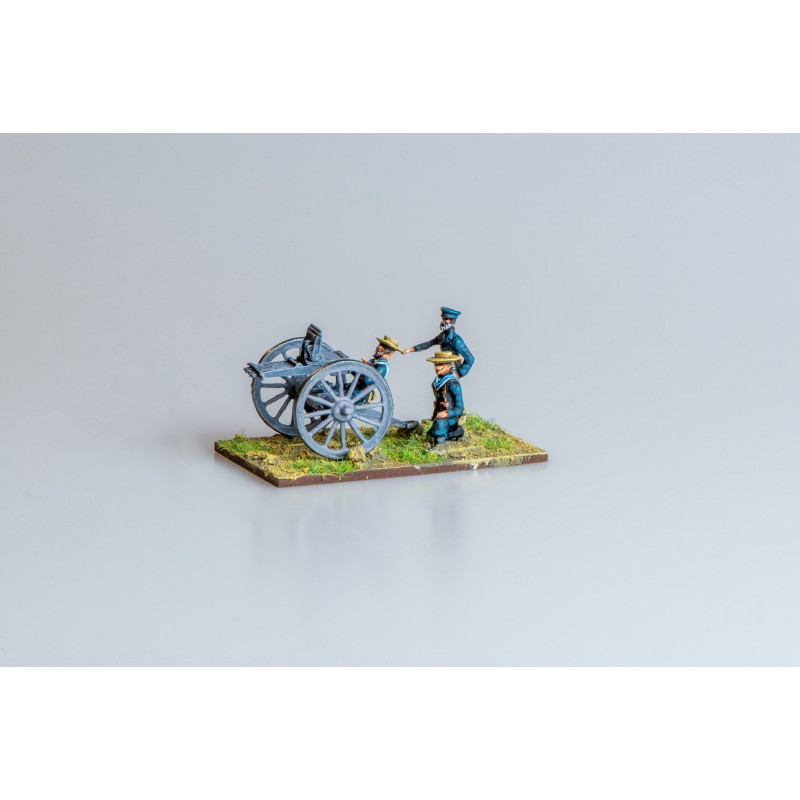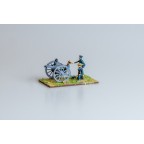This product is sold as an unpainted kit.
Additional Images.
1-2. This Gardner Gun model is an original display item from the Harrow Model Shop. For those who remember buying Jacklex figures from the shop in the late seventies, it will bring back many good memories I am sure. Thank you to Roy Boss for supplying the images.
THE
GARDNER GUN
The Gardner
Gun was invented in 1874 by William Gardner who served in the Union Army during
the American Civil War and was produced by Pratt and Whitney of Hartford
Connecticut. The gun had one, two or five barrels and was fed by a vertical
magazine and operated by a crank-handle. When the handle was turned, a feed arm
positioned a cartridge in the breech, the bolt closed and the weapon fired.
Turning the handle further opened the breechblock and extracted the spent case. The ammunition
came in boxes that, when opened, exposed the rims of the bullets. In this way a
whole box could be guided down the u-shaped channel of the magazine. Three men
could keep the gun in continuous operation. The Gardner was approved
for use in service with the Royal Navy and British Army in 1881. The Royal Navy
adopted the five-barrel version arranged horizontally with .45in calibre cartridges.
THE WARGAMER
There are perhaps three issues for the
wargamer using Gardners on the table top.
·
Reliability. The most
obvious issue is that of jamming. In tests held in 1879 the Gardner fired total
of 10,000 rounds. 4,722 before the first stoppage and 5,000 before the second.
In British Army tests 16,754 rounds were fired with 24 stoppages (mechanical
and crew) before a failure in the mechanism. However, in the field the
situation was more problematic. The best example was at Abu
Klea in 1885 when a Gardner jammed after firing 70 rounds. The Naval Brigade crew
was killed but the gun was saved. In the same year and more successfully, a
Gardner mounted on the gunboat ‘Lotus’ provided effective fire support for troops
on shore. Clearly some sort of random chance of jamming, perhaps after each
turn of firing, should be part of rules mechanism when using this gun.
·
Trained
Crew. Due to the complexity of all machine-guns the crews required
specialist training to operate them. Therefore, I would suggest that either, a trained
crew can only be replaced by a trained crew, or that the gun cannot operate when
it falls below a specified number of crew.
·
Ammunition
Supply. My usual mechanism for providing for the issue of ammunition
supply is by use of small D6s by the gun or limber to indicate and restrict ammunition
supply. I find that it prevents unlimited firing and makes the player consider
the tactical use of the weapon in a more historical manner.
Source: The
Colonial Wars Source Book, PJ Haythornthwaite, Caxton Editions, London, 2000. A
fascinating and highly readable text with a significant amount of useful detail
for the wargamer.
Jacklex Miniatures
Colonial Nineteenth Century 20mm metal wargame figures.




-144x144.jpg)
-144x144.jpg)
-800x800.jpg)
-800x800.jpg)